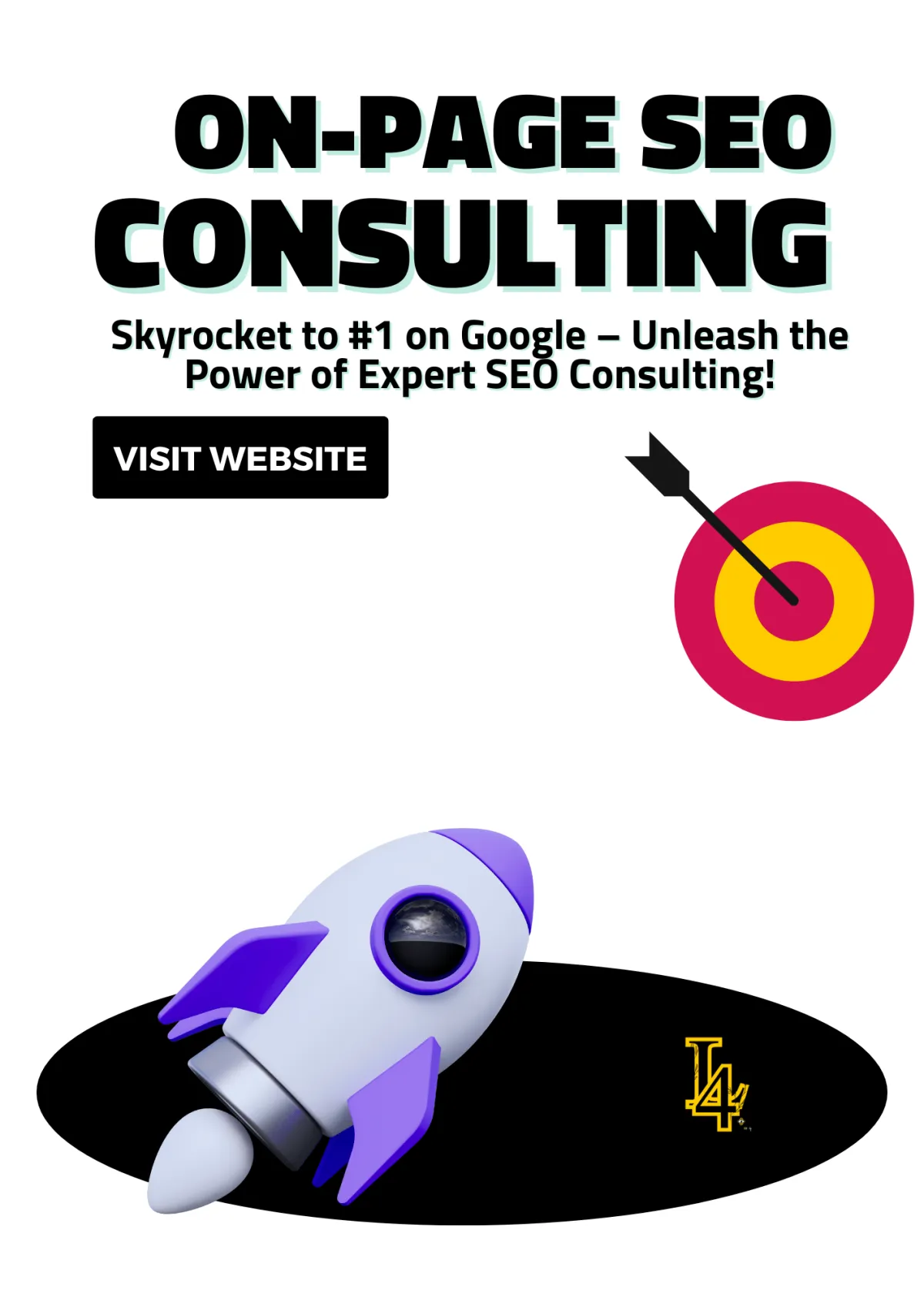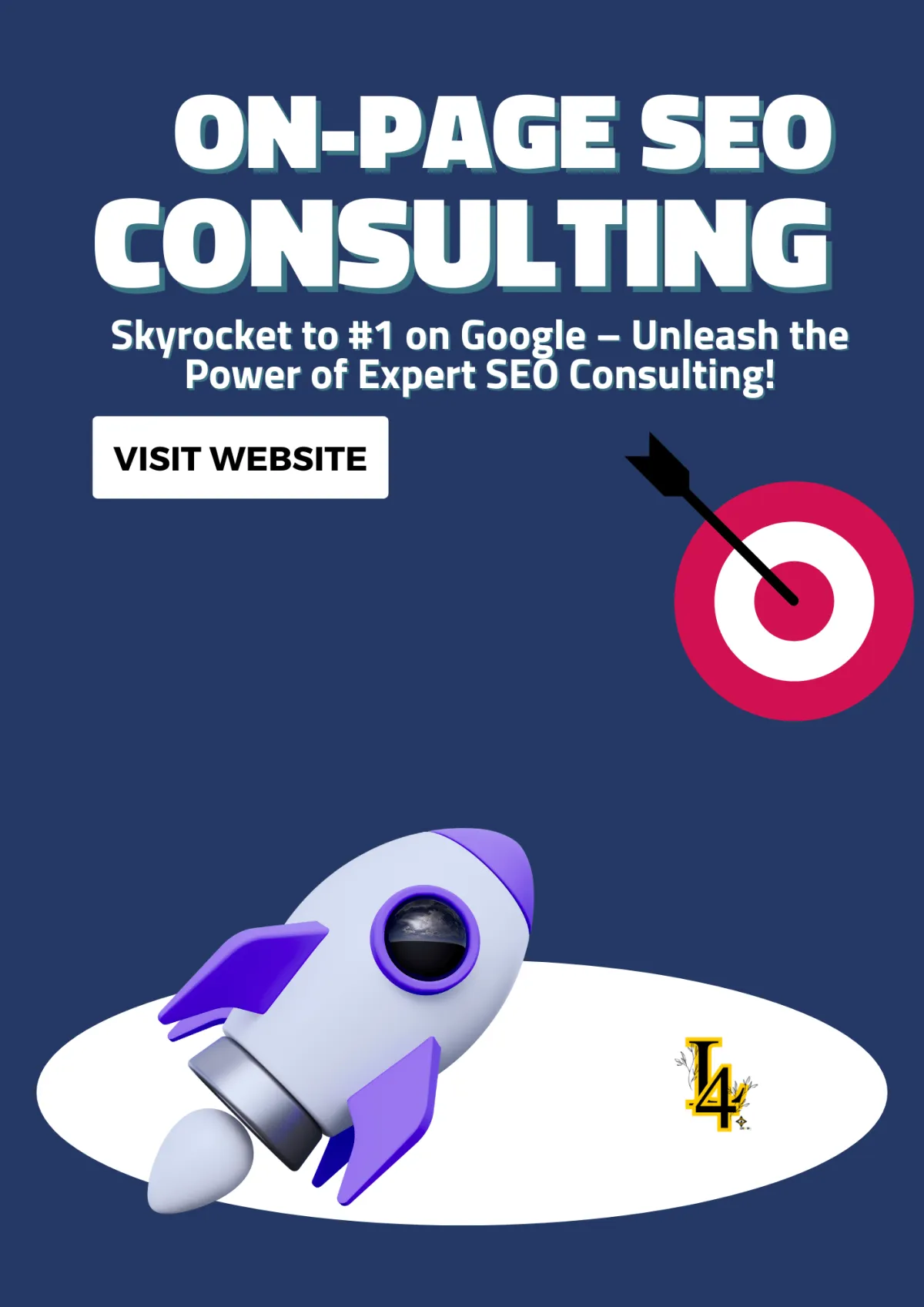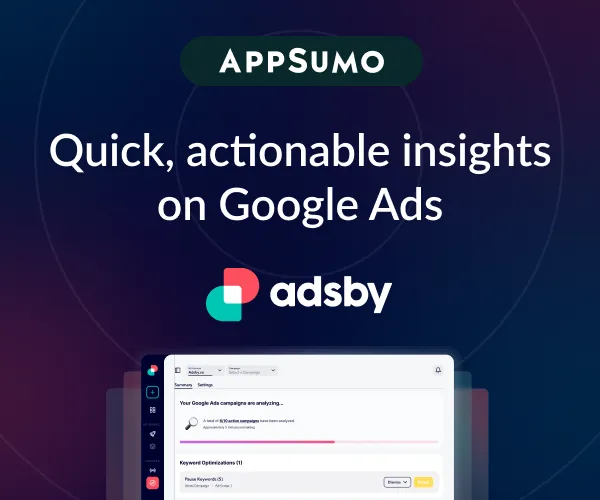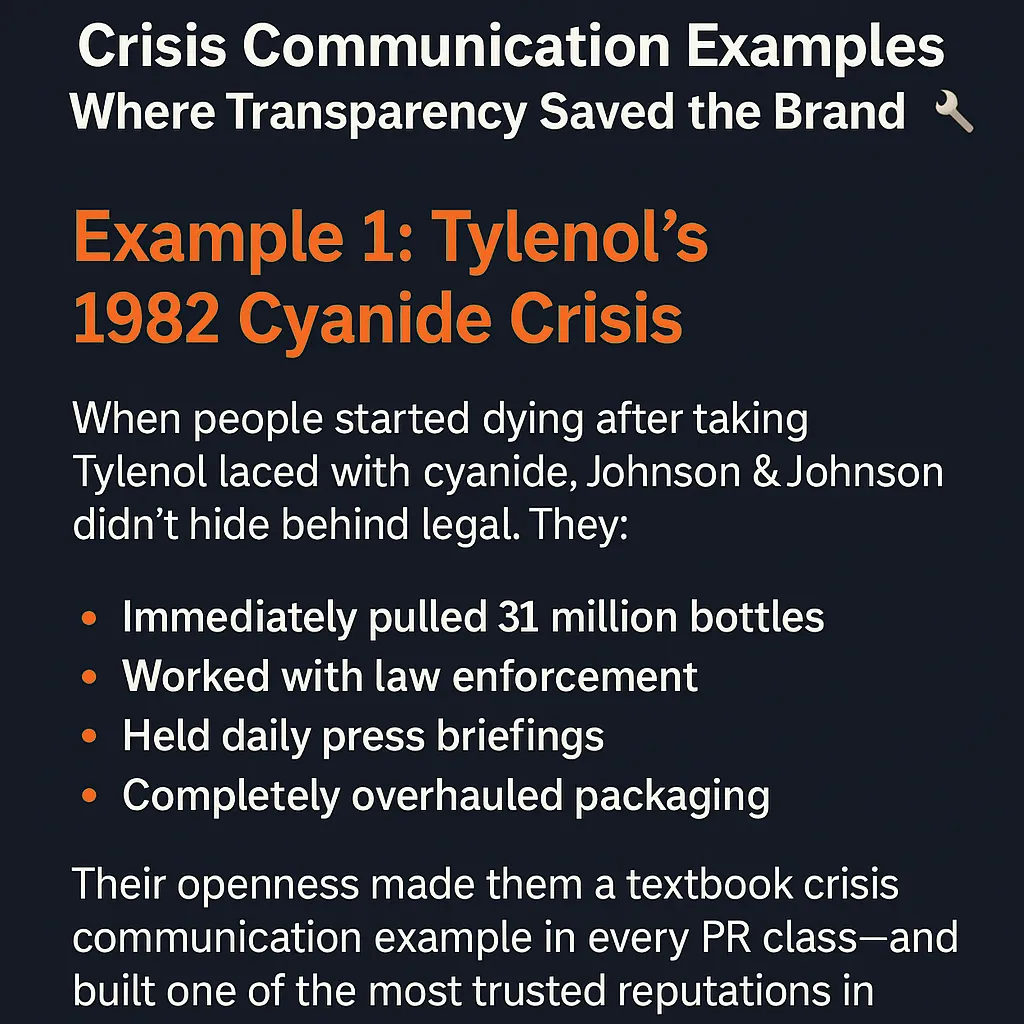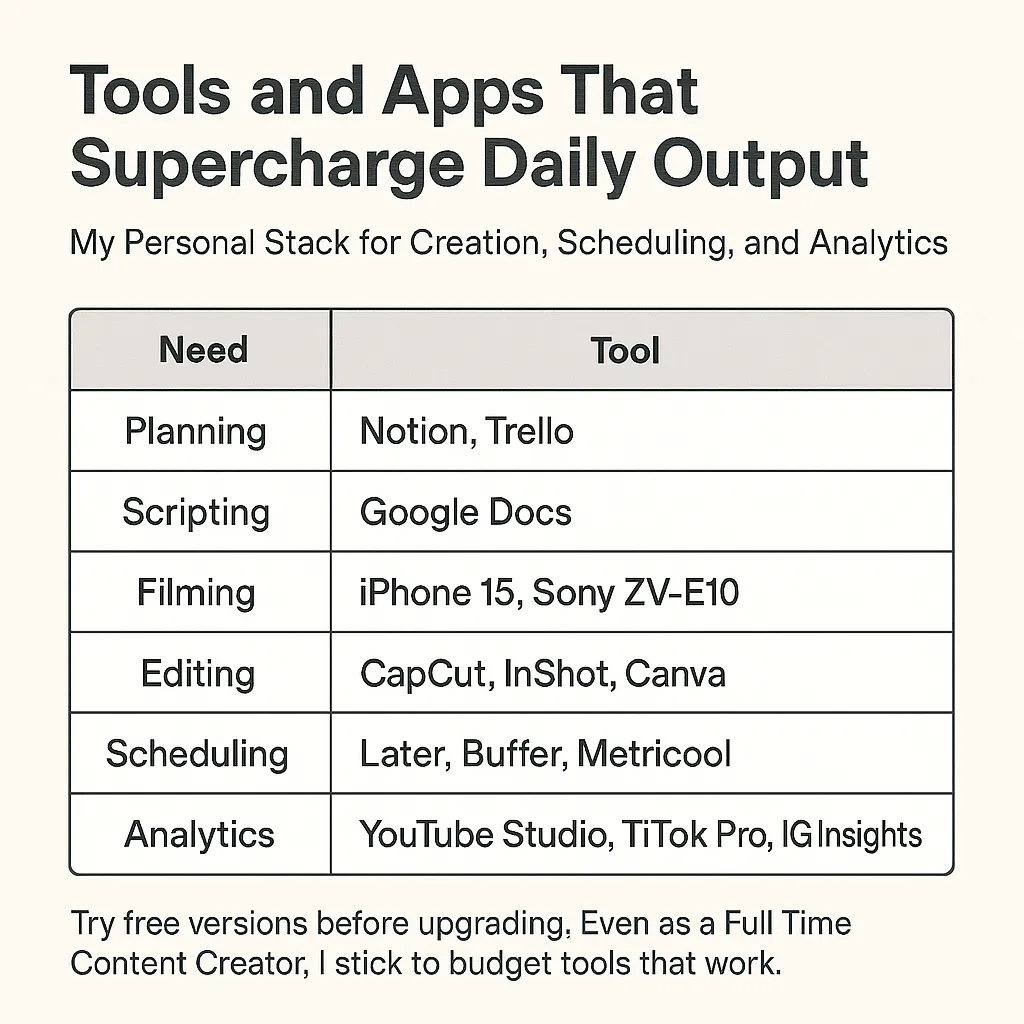
Effective Keyword Research Techniques to Boost Organic SEO Traffic
What’s the secret to driving consistent organic traffic to your website?
It starts with mastering effective keyword research techniques. By understanding your audience’s search intent, using the right tools, and strategically optimizing content, you can unlock a flood of organic traffic and elevate your website's visibility.
Effective Keyword Research Techniques to Boost Organic SEO Traffic
Effective Keyword Research Techniques for Improved Organic SEO Traffic
1. Understand Your Audience’s Search Intent
3. Focus on Long-Tail Keywords
4. Analyze Competitor Keywords
5. Leverage Google’s Free Tools
6. Prioritize Keywords with High ROI Potential
7. Group Keywords by Topic Clusters
8. Consider User Intent When Creating Content
9. Monitor and Refine Your Keyword Strategy
The Role of Semantic Keywords in Keyword Research and SEO
Why Are Semantic Keywords Important for SEO?
How to Use Semantic Keywords Effectively
How to Track Keyword Performance
Tools to Track Keyword Performance
Tips for Optimizing Based on Performance
Strategically Integrate Keywords into Content Without Over-Optimizing
1. Incorporate Keywords in Headings and Subheadings
Tip: Ensure headings remain concise and informative. Avoid keyword stuffing by focusing on natural phrasing.
2. Use Keywords in Meta Descriptions
3. Optimize Image Alt Text with Keywords
4. Include Keywords Naturally in the Body Content
6. Leverage Internal Links with Keywords as Anchor Text
7. Add Keywords to Headers and Captions for Multimedia
8. Use Keywords in Snippets and FAQs
9. Optimize Titles with Keywords
10. Maintain a Balance to Avoid Over-Optimization
Keyword Research Checklist: Conduct Your Research Efficiently
5. Research Competitor Keywords
6. Identify Long-Tail Keywords
7. Group Keywords into Clusters
9. Check Trends and Seasonality
10. Optimize for Local SEO (if applicable)
12. Monitor and Refine Your Keywords
Long-Tail Keywords: The Secret to Improved Organic SEO Traffic
Why Long-Tail Keywords Matter for SEO
Effective Keyword Research Techniques for Long-Tail Keywords
2. Leverage Keyword Research Tools
5. Incorporate Keywords into Content Strategically
Real-World Example: Long-Tail Keywords in Action
Effective Keyword Research Techniques for Improved Organic SEO Traffic
Keyword research is the backbone of any successful SEO strategy. Without the right keywords, even the most well-crafted content can fail to attract traffic. By identifying and targeting the right search terms, you can increase your website’s visibility, drive organic traffic, and connect with your audience more effectively. This guide will walk you through proven keyword research techniques to improve your organic SEO traffic and elevate your online presence.
1. Understand Your Audience’s Search Intent
Before diving into tools and strategies, start by understanding your audience. What are they searching for? Are they looking for information, comparing products, or ready to make a purchase? This understanding, known as search intent, should guide your keyword strategy.
Types of Search Intent:
Informational: Users are seeking answers (e.g., "how to research keywords").
Navigational: Users want to find a specific site or page (e.g., "Google Keyword Planner").
Transactional: Users are ready to take action (e.g., "buy SEO software").
Pro Tip: Focus on a mix of intents to capture users at various stages of their journey.
2. Use Keyword Research Tools
Keyword tools simplify the process of finding relevant terms with high traffic potential. Here are some popular tools and how to use them:
Google Keyword Planner: Ideal for finding keywords with search volume and competition data.
Ahrefs: Provides keyword difficulty, search volume, and competitive analysis.
SEMrush: Great for keyword suggestions and identifying competitor keywords.
AnswerThePublic: Generates questions and phrases related to your keyword.
How to Use Them:
Enter a seed keyword related to your niche.
Review suggested keywords, search volume, and competition level.
Filter for long-tail keywords (e.g., "best keyword research tools for small businesses").
3. Focus on Long-Tail Keywords
Long-tail keywords are longer, more specific phrases that tend to have lower competition but higher conversion potential. For example, instead of targeting "keyword research," try "effective keyword research techniques for beginners."
Why Long-Tail Keywords Work:
They attract highly targeted traffic.
They align closely with search intent.
They’re easier to rank for, especially for smaller websites.
Example: If your niche is fitness, instead of "weight loss," you might target "best exercises for weight loss at home."
4. Analyze Competitor Keywords
Your competitors can be a goldmine for keyword inspiration. Use tools like Ahrefs, SEMrush, or Moz to analyze their top-ranking pages and the keywords they’re targeting.
Steps to Follow:
Identify competitors in your niche or industry.
Use a keyword tool to input their domain and analyze their top-performing pages.
Find opportunities where you can target similar or related keywords.
Pro Tip: Look for gaps—keywords your competitors aren’t targeting or where their content is weak.
5. Leverage Google’s Free Tools
Google offers several tools that provide valuable keyword insights:
Google Search Console: Check which keywords are already driving traffic to your site and optimize for those with high impressions but low click-through rates.
Google Trends: Discover trending topics and seasonality for keywords.
Google Autocomplete: Type a keyword into the Google search bar and note the suggestions that pop up.
People Also Ask: Use questions from this feature as content ideas for informational keywords.
6. Prioritize Keywords with High ROI Potential
Not all keywords are equal. Some may have high search volume but low relevance to your goals. Focus on keywords that align with your business objectives and audience needs.
Factors to Consider:
Search Volume: High enough to drive traffic but not overly competitive.
Keyword Difficulty (KD): Ensure the difficulty level matches your site’s domain authority.
Commercial Intent: Especially important for transactional keywords.
Example: A marketing agency might prioritize "SEO services for small businesses" over "SEO definition."
7. Group Keywords by Topic Clusters
Instead of targeting individual keywords, organize them into topic clusters. A topic cluster includes a primary keyword (pillar) and related secondary keywords.
Benefits:
Enhances user experience by providing comprehensive content.
Improves SEO by creating a logical site structure.
Helps rank for multiple related terms.
Example:
Pillar Topic: "Keyword Research Techniques"
Cluster Keywords: "how to use keyword research tools," "benefits of long-tail keywords," "competitor keyword analysis tips."
8. Consider User Intent When Creating Content
Once you’ve identified keywords, create content that matches the intent behind them. If the keyword is informational, provide in-depth guides or tutorials. For transactional keywords, focus on product pages or services.
Content Types by Intent:
Informational: Blog posts, how-to guides, videos.
Navigational: Landing pages, product descriptions.
Transactional: Product pages, case studies, reviews.
9. Monitor and Refine Your Keyword Strategy
Keyword research isn’t a one-time task. Regularly monitor your keyword performance and refine your strategy based on analytics data.
Tools to Use:
Google Analytics: Track organic traffic and user behavior.
Google Search Console: Monitor rankings and clicks for target keywords.
Ahrefs/SEMrush: Check your keyword rankings over time.
10. Optimize for Voice Search
With the rise of voice search, consider including natural, conversational phrases in your keyword strategy. Focus on long-tail keywords and questions that mimic how people speak.
Example:
Instead of "keyword research tools," use "What are the best tools for keyword research?"
The Role of Semantic Keywords in Keyword Research and SEO
When it comes to effective keyword research and SEO, targeting a single keyword isn’t enough to rank well and attract organic traffic. Search engines, particularly Google, are becoming smarter at understanding semantic relationships between words, meaning they look for context and relevance rather than just keyword repetition. This is where semantic keywords—also known as LSI (Latent Semantic Indexing) keywords—come into play.
What Are Semantic Keywords?
Semantic keywords are terms and phrases that are contextually related to your primary keyword. They help search engines understand the broader meaning of your content and assess how well it aligns with a user’s intent.
For example:
Primary keyword: "keyword research techniques"
Semantic keywords: "SEO tools," "long-tail keywords," "search intent," "content optimization."
These related terms enhance the depth of your content and show search engines that your page thoroughly covers the topic.
Why Are Semantic Keywords Important for SEO?
Improves Search Engine Understanding
Search engines analyze content holistically, and semantic keywords help them understand the context of your page. This improves your chances of ranking for a variety of relevant queries.Targets a Broader Audience
By incorporating related terms, you can rank for multiple search variations, capturing traffic from users searching for similar but slightly different phrases.Reduces Keyword Stuffing
Instead of repeating the same keyword unnaturally, using semantic keywords allows you to create more natural and engaging content.Aligns with User Intent
Semantic keywords address different aspects of a topic, ensuring your content matches the diverse intentions users might have when searching for the primary keyword.
How to Find Semantic Keywords
1. Use Google Search Features
Google itself is an excellent source for discovering semantic keywords:
Autocomplete: Type your primary keyword into Google’s search bar and note the suggestions.
People Also Ask: Review the questions in this section for related terms and queries.
Related Searches: Scroll to the bottom of the search results page to find similar keywords.
2. Leverage SEO Tools
Many keyword research tools are designed to uncover semantic keywords:
Ahrefs: Use the "Keyword Ideas" or "Related Terms" features.
SEMrush: Check the "Keyword Magic Tool" to find variations and related phrases.
LSIGraph: Specifically designed to generate semantic keywords.
3. Analyze Competitor Content
Look at the top-ranking pages for your primary keyword. Identify the related terms and phrases they use to cover the topic comprehensively.
4. Use Content Gap Analysis
Tools like Ahrefs or SEMrush allow you to compare your content with competitors, identifying semantic keywords they target that you might have missed.
How to Use Semantic Keywords Effectively
Incorporate Them Naturally Avoid keyword stuffing by seamlessly integrating semantic terms into your content. Focus on improving readability and user experience.
Structure Content Strategically
Use semantic keywords in headings and subheadings.
Address related terms in specific sections of your content.
Example: If your primary keyword is "keyword research techniques," dedicate sections to "how to use SEO tools," "the importance of long-tail keywords," and "common mistakes in keyword research."
Optimize Metadata Include semantic keywords in meta titles, descriptions, and image alt texts to enhance SEO without sounding repetitive.
Answer User Questions Use semantic keywords to directly answer questions users might have. For example, if your primary keyword is "keyword research tools," a semantic keyword like "free keyword tools" could lead to a FAQ section or a comparison table.
Balance Primary and Semantic Keywords Maintain focus on your primary keyword, but use semantic keywords to add depth and variation.
Real-World Example
Let’s say you’re creating content for the primary keyword "best keyword research tools."
Semantic keywords to include:
"SEO tools for beginners"
"free keyword planner"
"long-tail keyword strategies"
"how to find competitive keywords"
Incorporating these terms:
Heading: "Top SEO Tools for Beginners: Free Keyword Planners and Advanced Features."
Body Content: Explain how "long-tail keyword strategies" work in these tools.
Meta Description: "Explore the best keyword research tools, including free options, for boosting your SEO strategy."
Using semantic keywords is essential for creating rich, relevant, and comprehensive content that ranks well in search engines. These terms not only improve the context and relevance of your content but also ensure you capture a wider range of search queries. By integrating semantic keywords naturally and strategically, you can enhance your SEO efforts, attract more organic traffic, and provide greater value to your audience.
How to Track Keyword Performance
Tracking keyword performance is essential to understanding how your SEO efforts are paying off. By monitoring rankings, traffic, and conversions, you can refine your strategy to achieve better results.
Tools to Track Keyword Performance
Google Search Console:
What It Does: Shows which keywords are driving impressions and clicks to your site.
How to Use It:
Go to the "Performance" section.
Analyze keyword clicks, CTR, and average position.
Identify high-impression, low-click keywords for optimization opportunities.
Google Analytics:
What It Does: Tracks organic traffic and user behavior on your site.
How to Use It:
Link it with Search Console for deeper insights.
Check organic traffic trends under "Acquisition" > "Overview."
Analyze bounce rates and session durations for keyword-driven pages.
Ahrefs/SEMrush:
What They Do: Provide in-depth tracking of keyword rankings, search volume, and competitor performance.
How to Use Them:
Set up a project to track target keywords over time.
Monitor ranking fluctuations and identify high-opportunity keywords.
Analyze keyword difficulty to prioritize low-competition terms.
Rank Tracker Tools:
Tools to Use: Options like SERPWatcher or Advanced Web Ranking track specific keyword rankings daily or weekly.
Benefit: Provides clear visuals of how your keywords perform over time.
Metrics to Monitor
Keyword Rankings: Track changes in your position for target terms.
Organic Traffic: Monitor how many visitors come to your site from organic searches.
Click-Through Rate (CTR): Assess how often your pages are clicked when they appear in search results.
Conversion Rates: Measure how well your keyword-driven traffic converts into leads or sales.
Tips for Optimizing Based on Performance
Identify High-Performing Keywords: Double down on these with additional content or internal linking.
Optimize Low-Performing Keywords: Adjust content to better match user intent or improve its depth.
Track Competitor Movements: Use tools to monitor how competitors are ranking for the same keywords and refine your strategy.
By understanding and incorporating semantic keywords and consistently tracking their performance, you’ll create content that’s both search-engine-friendly and valuable to readers. These steps ensure that your SEO strategy remains dynamic, focused, and effective.
Strategically Integrate Keywords into Content Without Over-Optimizing
Keyword integration is an essential part of SEO, but it’s important to do it naturally and strategically to avoid keyword stuffing, which can harm both user experience and search engine rankings. By placing keywords in the right locations, you can optimize your content for search engines while maintaining its readability and value for your audience. Here’s how to integrate keywords into your content effectively.
1. Incorporate Keywords in Headings and Subheadings
Headings and subheadings help both users and search engines understand the structure and main topics of your content. Including your target keywords here improves relevance and makes your content easier to scan.
Best Practices:
Place your primary keyword in the main title (H1).
Example: "Effective Keyword Research Techniques for Improved Organic SEO Traffic."
Use secondary keywords in subheadings (H2, H3).
Example: For a section on tools, use a subheading like "Top Keyword Research Tools to Boost SEO."
Tip: Ensure headings remain concise and informative. Avoid keyword stuffing by focusing on natural phrasing.
2. Use Keywords in Meta Descriptions
The meta description is the snippet of text that appears below your link in search results. Including your primary keyword here can improve click-through rates and signal relevance to search engines.
Best Practices:
Include the primary keyword near the beginning of the meta description.
Keep the description under 155 characters for optimal display in search results.
Write compelling, user-focused text that encourages clicks.
Example Meta Description: "Learn effective keyword research techniques to boost organic SEO traffic and improve your website’s search rankings."
3. Optimize Image Alt Text with Keywords
Alt text describes images to search engines and visually impaired users. Including relevant keywords here can improve image search rankings and contribute to overall SEO.
Best Practices:
Use descriptive text that explains the image while naturally incorporating the keyword.
Avoid keyword stuffing by focusing on accuracy.
Include keywords in the image filename as well (e.g., keyword-research-tools.jpg).
Example Alt Text: "Screenshot of a keyword research tool displaying search volume and competition data."
4. Include Keywords Naturally in the Body Content
The main content of your page is where keywords have the most impact. Strategically placing them ensures relevance while maintaining readability.
Best Practices:
Use the primary keyword within the first 100 words of your content.
Distribute secondary keywords naturally throughout the article.
Avoid overusing the same keyword. Instead, use variations or synonyms (e.g., "SEO techniques," "keyword strategies").
Example:
"Effective keyword research techniques are essential for driving organic SEO traffic. By analyzing search volume, competition, and user intent, you can identify the best keywords to optimize your content."
5. Add Keywords to URLs
Search engines and users prefer clean, descriptive URLs. Including your primary keyword in the URL makes it more relevant and improves click-through rates.
Best Practices:
Keep URLs short and to the point.
Use hyphens to separate words.
Avoid stop words (e.g., and, the, of) unless necessary.
Example: www.example.com/keyword-research-techniques-seo
6. Leverage Internal Links with Keywords as Anchor Text
Internal linking improves navigation and helps search engines understand the structure of your site. Using keywords as anchor text adds relevance to the linked pages.
Best Practices:
Use natural phrases that include the keyword rather than exact-match text.
Link to relevant, high-value pages on your site.
Example: "Learn more about SEO strategies by visiting our comprehensive guide."
7. Add Keywords to Headers and Captions for Multimedia
Videos and infographics often enhance user engagement. Including keywords in their titles, headers, and captions can make these elements more SEO-friendly.
Best Practices:
Name the file descriptively (e.g., seo-keyword-strategies-video.mp4).
Write a brief caption that incorporates the keyword while describing the media.
Example Caption: "Watch our video tutorial on effective keyword research strategies for boosting SEO."
8. Use Keywords in Snippets and FAQs
If your content includes structured data like FAQs or snippets, keywords should appear in the questions and answers.
Best Practices:
Write natural-sounding questions that reflect common search queries.
Include the keyword naturally in the answer without forcing it.
Example FAQ:
Q: What are the best keyword research tools for SEO?
A: The best tools for keyword research include Google Keyword Planner, SEMrush, and Ahrefs, which help identify high-volume, low-competition keywords.
9. Optimize Titles with Keywords
The title tag is a critical ranking factor, and including your primary keyword here ensures search engines and users know what your content is about.
Best Practices:
Place the primary keyword at the beginning of the title for emphasis.
Keep the title under 60 characters to avoid truncation in search results.
Example: "Keyword Research Techniques: Boost Your SEO Traffic in 2023"
10. Maintain a Balance to Avoid Over-Optimization
While integrating keywords is essential, overloading your content with them can lead to penalties from search engines and alienate readers.
Best Practices:
Aim for a keyword density of 1-2% to keep the content natural.
Focus on user experience and readability over search engine optimization.
Tip: Read your content aloud. If the keywords feel forced or repetitive, revise them for better flow.
Integrating keywords into your content requires a strategic and balanced approach. By placing them in headings, meta descriptions, alt text, body content, and other strategic locations, you can improve your content’s visibility without sacrificing readability. Remember, your ultimate goal is to provide value to your audience—search engines will reward content that genuinely meets user needs.
Keyword Research Checklist: Conduct Your Research Efficiently
Here’s a step-by-step keyword research checklist to help you identify the best keywords and optimize your content for improved organic SEO traffic. Use this actionable guide to stay organized and focused during the process.
1. Define Your Goals
✅ Identify the purpose of your keyword research (e.g., driving traffic, boosting conversions, building authority).
✅ Determine your target audience and their needs.
✅ Specify your niche or industry to focus your research.
2. Brainstorm Seed Keywords
✅ List broad topics related to your business or content.
✅ Think of phrases your audience might search for.
✅ Use competitor websites or products as inspiration for initial ideas.
3. Use Keyword Research Tools
✅ Input your seed keywords into tools like Google Keyword Planner, SEMrush, or Ahrefs.
✅ Check search volume, keyword difficulty, and competition for each term.
✅ Analyze long-tail keyword suggestions for specific search intents.
4. Analyze Search Intent
✅ Categorize keywords by intent (informational, navigational, transactional).
✅ Choose keywords that align with your content goals.
✅ Ensure the keywords reflect what your audience is looking for.
5. Research Competitor Keywords
✅ Identify your top competitors in the industry.
✅ Use tools like SEMrush or Ahrefs to analyze their keyword strategies.
✅ Look for gaps where your competitors are missing opportunities.
6. Identify Long-Tail Keywords
✅ Focus on specific, low-competition keywords with high conversion potential.
✅ Use tools like AnswerThePublic or Ubersuggest for question-based long-tail keywords.
✅ Prioritize phrases that match niche audience needs.
7. Group Keywords into Clusters
✅ Organize related keywords into topic clusters.
✅ Assign a primary keyword for each cluster and list supporting secondary keywords.
✅ Plan content around each cluster to target multiple keywords simultaneously.
8. Evaluate Keyword Metrics
✅ Check the following metrics for each keyword:
Search Volume: Is it enough to drive traffic?
Keyword Difficulty: Can you realistically rank for it?
CPC (Cost Per Click): Does it indicate high-value commercial intent?
✅ Choose keywords that balance volume and competition.
9. Check Trends and Seasonality
✅ Use Google Trends to identify seasonal keywords.
✅ Look for opportunities to target trending topics in your niche.
✅ Plan content around spikes in search interest.
10. Optimize for Local SEO (if applicable)
✅ Include location-based keywords for local businesses (e.g., "best pizza in Chicago").
✅ Optimize your Google My Business listing to target geo-specific terms.
✅ Use local-specific modifiers like city names, neighborhoods, or regions.
11. Create a Content Plan
✅ Assign keywords to specific content types (blog posts, landing pages, FAQs).
✅ Prioritize high-value keywords for cornerstone content.
✅ Plan supporting content to target secondary or long-tail keywords.
12. Monitor and Refine Your Keywords
✅ Use Google Analytics and Search Console to track performance over time.
✅ Revisit your keyword list periodically to adjust for trends and competition.
✅ Add new keywords and retire underperforming ones based on data insights.
Bonus Tips
🔹 Focus on User Intent: Ensure your content answers the questions your audience is asking.
🔹 Avoid Keyword Stuffing: Prioritize quality and natural integration over density.
🔹 Leverage Semantic Keywords: Include related terms to broaden relevance.
This checklist simplifies the keyword research process into actionable steps that you can follow systematically. Whether you’re optimizing your first blog post or refining an ongoing SEO strategy, this guide ensures you stay organized and focused on driving meaningful results. Start using it today to maximize your organic SEO traffic! 🚀
Long-Tail Keywords: The Secret to Improved Organic SEO Traffic
When it comes to improving your website’s visibility and increasing organic traffic, long-tail keywords are one of the most powerful yet underutilized tools. These specific, multi-word phrases align more closely with user intent and often deliver better results than broad, highly competitive keywords. By incorporating effective keyword research techniques for improved organic SEO traffic, you can target long-tail keywords to attract the right audience and achieve higher rankings.
What Are Long-Tail Keywords?
Long-tail keywords are longer and more specific phrases that people use when they are closer to making a decision or finding detailed information. Unlike broad, single-word keywords, long-tail keywords often have lower search volumes but significantly higher conversion rates.
Example:
Broad Keyword: "fitness"
Long-Tail Keyword: "best home fitness routines for beginners"
Why Long-Tail Keywords Matter for SEO
Lower Competition:
Long-tail keywords have less competition, making it easier for smaller websites to rank higher in search results.Higher Conversion Rates:
These keywords capture users with specific intent, such as "buy affordable fitness trackers online," leading to better engagement and conversions.Improved Relevance:
Targeting long-tail keywords helps you align your content with what your audience is actively searching for.Voice Search Optimization:
With the rise of voice search, long-tail keywords are essential for capturing conversational queries like, "What are the best keyword research tools?"
Effective Keyword Research Techniques for Long-Tail Keywords
To harness the power of long-tail keywords, follow these effective keyword research techniques for improved organic SEO traffic:
1. Use Google’s Free Tools
Google Autocomplete: Start typing a keyword into Google’s search bar and review the suggestions. These are real queries people are searching for.
People Also Ask: Use this feature to find related questions and craft content that addresses them.
Related Searches: Scroll to the bottom of the search results page for additional long-tail keyword ideas.
2. Leverage Keyword Research Tools
Professional tools can streamline the process and provide detailed metrics for each keyword:
Ahrefs and SEMrush: Analyze keyword difficulty, search volume, and competitive analysis for long-tail phrases.
AnswerThePublic: Generate questions and topic ideas based on your primary keyword.
Ubersuggest: Find long-tail variations and compare their performance.
3. Analyze Competitors
Study your competitors’ content to identify the long-tail keywords they are targeting. Use tools like SEMrush to input their domain and uncover top-ranking keywords that could work for your content.
4. Focus on Search Intent
Every long-tail keyword serves a specific purpose. Match your content to the intent behind the search:
Informational Intent: Create how-to guides or tutorials.
Transactional Intent: Optimize product pages for purchase-related queries.
Navigational Intent: Target branded keywords like "best SEO tools Ahrefs."
5. Incorporate Keywords into Content Strategically
Use your long-tail keywords naturally throughout your content:
Include them in headings, subheadings, and meta descriptions.
Optimize for featured snippets by answering questions directly.
Add them to image alt texts and internal links to enhance SEO.
Real-World Example: Long-Tail Keywords in Action
Let’s say you’re running a travel blog. Instead of targeting "travel destinations," focus on long-tail keywords like:
"Top budget-friendly travel destinations in Europe"
"Best solo travel tips for women"
By optimizing content for these specific queries, you’re more likely to attract readers actively searching for those topics.
Benefits of Using Long-Tail Keywords
Build Authority in a Niche:
Covering detailed, specific topics positions your website as a go-to resource.Attract High-Quality Traffic:
Users searching for long-tail queries are more likely to engage with your content.Boost Overall SEO Performance:
Ranking for several long-tail keywords increases your site’s visibility and contributes to cumulative SEO success.
Conclusion
Can you afford to overlook the importance of keyword research in your SEO strategy?
Absolutely not. Keyword research is the foundation of any successful SEO campaign. By implementing the techniques outlined in this guide—such as focusing on long-tail keywords, leveraging semantic terms, and tracking performance—you can ensure your website consistently attracts and engages the right audience. Start refining your keyword strategy today and watch your organic traffic soar!


